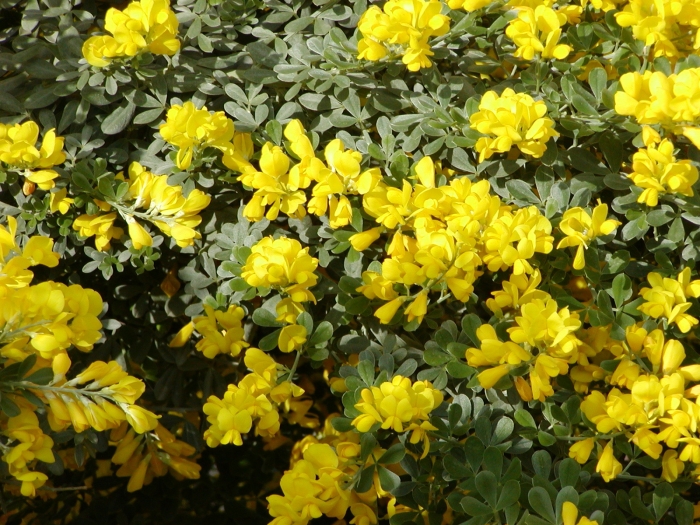Sweet Broom
(Genista stenopetala)
Sweet Broom (Genista stenopetala)
/
/

© Charles Stirton
CC BY-SA 4.0
Image By:
© Charles Stirton
Recorded By:
Copyright:
CC BY-SA 4.0
Copyright Notice:
Photo by: © Charles Stirton | License Type: CC BY-SA 4.0 | License URL: http://creativecommons.org/licenses/by-sa/4.0/ | Uploader: charles_stirton | Publisher: iNaturalist |

























Estimated Native Range
Summary
Genista stenopetala, commonly known as sweet broom or Easter broom, is an evergreen shrub native to the laurel forests and pine woodlands of the Canary Islands, specifically La Palma and Tenerife. It can grow up to 10 feet tall and is characterized by its trifoliate, silky, silvery leaves. The plant produces strongly scented, vibrant yellow flowers that are particularly showy, appearing in late winter or early spring, followed by 1-2 inch long pods. Sweet broom has been awarded the Royal Horticultural Society’s Award of Garden Merit, indicating its value in cultivation.
Sweet broom is appreciated for its fragrant and eye-catching yellow blooms, which can add a splash of color to gardens during the late winter and early spring months when few other plants are in flower. It is often used in ornamental plantings, borders, and as a specimen plant in areas with mild climates. In cultivation, sweet broom requires well-drained soil, moderate water, and thrives in full sun to part shade. It is not frost-hardy and does not tolerate temperatures below 41°F, making it suitable for growth in USDA zones 9-11 or as a potted plant that can be moved indoors during colder periods. While generally disease-free, it can be susceptible to root rot if overwatered or planted in poorly drained soils.CC BY-SA 4.0
Sweet broom is appreciated for its fragrant and eye-catching yellow blooms, which can add a splash of color to gardens during the late winter and early spring months when few other plants are in flower. It is often used in ornamental plantings, borders, and as a specimen plant in areas with mild climates. In cultivation, sweet broom requires well-drained soil, moderate water, and thrives in full sun to part shade. It is not frost-hardy and does not tolerate temperatures below 41°F, making it suitable for growth in USDA zones 9-11 or as a potted plant that can be moved indoors during colder periods. While generally disease-free, it can be susceptible to root rot if overwatered or planted in poorly drained soils.CC BY-SA 4.0
Plant Description
- Plant Type: Shrub
- Height: 2-3 feet
- Width: 2-2.5 feet
- Growth Rate: Moderate
- Flower Color: Yellow
- Flowering Season: Spring, Summer
- Leaf Retention: Evergreen
Growth Requirements
- Sun: Full Sun
- Water: Low
- Drainage: Medium, Fast
Common Uses
Drought Tolerant, Low Maintenance, Rock Garden, Showy Flowers
Natural Habitat
Laurel forests and pine woodlands of the Canary Islands
Other Names
Common Names: Mount Etna Broom, Madeira Broom, Narrow-petaled Genista
Scientific Names: , Genista stenopetala, Cytiscus stenopetalus, Cytisus everestianus, Cytisus racemosus, Cytisus stenopetalus, Cytisus stenopetalus, Cytisus stenopetalus var. gomerae, Cytisus stenopetalus var. palmensis, Genista everestiana
GBIF Accepted Name: